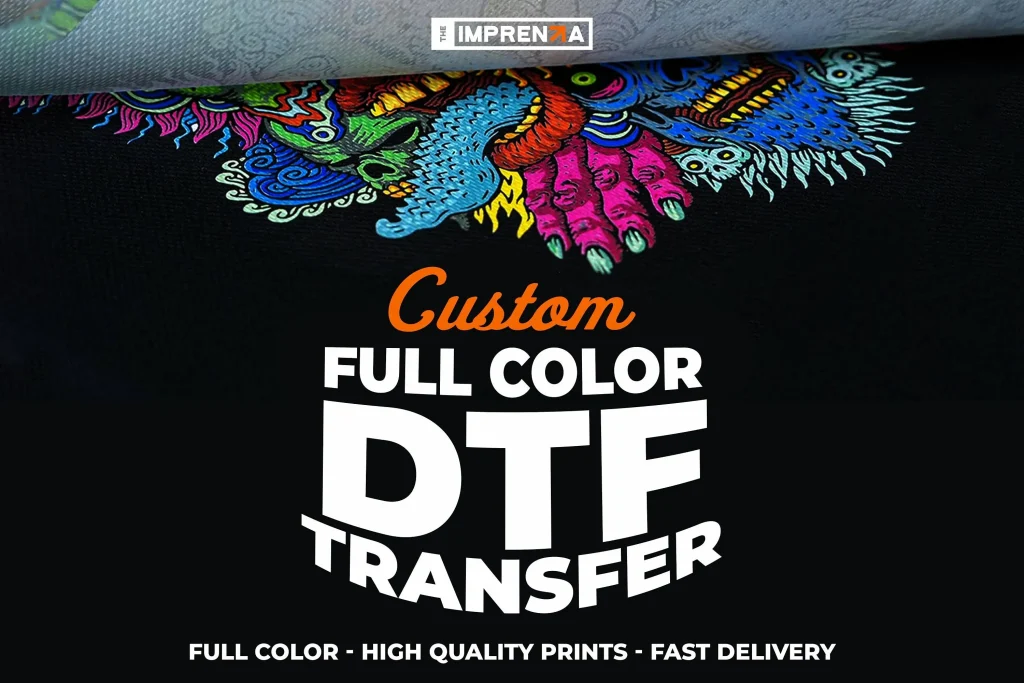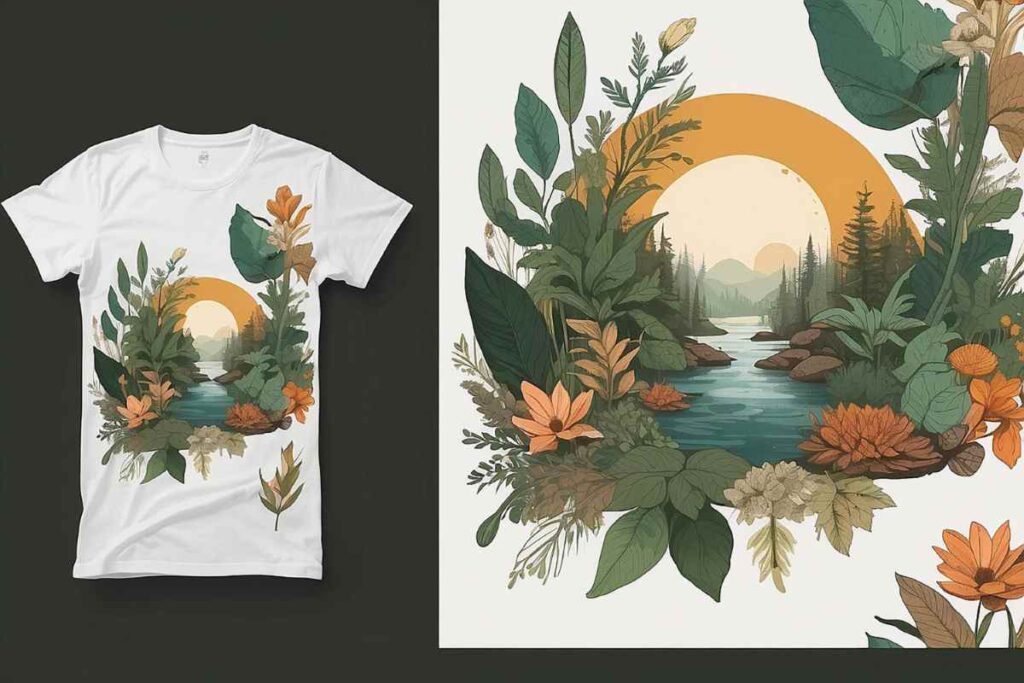In the dynamic realm of custom apparel printing, DTF transfers have emerged as a revolutionary technique, captivating the attention of designers and businesses alike. This innovative method, known as Direct-to-Film printing, allows for the creation of vibrant, high-quality designs that can effortlessly adhere to a wide array of fabric types. What sets DTF transfers apart is their exceptional print durability, ensuring that colors remain rich and vivid wash after wash. As the popularity of various transfer methods grows, many are turning to DTF as a cost-effective solution that maximizes efficiency without sacrificing quality. In this blog, I will share my hands-on experience with DTF transfers, detailing the benefits and challenges encountered throughout my journey.
When we delve into the world of fabric printing, the art of Direct-to-Film transfers, often simply referred to as DTF printing, offers an exciting alternative to traditional methods. Utilizing a unique film medium, this innovative approach allows for the transfer of detailed designs onto garments with impressive clarity and durability. Compared to other printing techniques, DTF stands out for its ability to produce custom designs that maintain their brilliance across various fabric types. This responsiveness to different materials expands the horizon for businesses and creators looking to make an impact with their apparel. Throughout this article, I will explore the ins and outs of DTF printing, from setup to execution, to shed light on why it is becoming a favored choice among custom apparel enthusiasts.
Understanding Direct-to-Film (DTF) Printing
Direct-to-Film (DTF) printing is revolutionizing the custom apparel industry by enabling designers and businesses to produce intricate designs with ease. This method distinguishes itself by using a specialized film that captures vibrant images, which are then transferred to a fabric. Unlike traditional transfer methods, DTF printing combines a range of printing technologies to deliver superior results that are both durable and visually striking. The unique process allows for a vast palette of colors, ensuring that every design pops, catering to the diverse preferences of consumers.
One of the greatest advantages of DTF printing lies in its capability to work on various fabric types. Whether it’s cotton, polyester, or a blend, DTF offers versatility that other methods struggle to match. This adaptability means that businesses can cater to a broader audience, creating everything from custom t-shirts to specialized sportswear. Furthermore, with the ever-growing trend of personalized apparel, DTF printing positions itself as an essential tool for both small businesses and DIY enthusiasts alike.
The Benefits of DTF Transfers in Apparel Customization
One significant advantage of DTF transfers is the print quality they provide. Users consistently report that DTF prints showcase remarkable detail and depth, making them suitable for intricate designs that often fail to translate well with other printing techniques. The vibrant colors achieved through this method not only enhance the aesthetic appeal of the garments but also ensure that the printed designs remain eye-catching over time.
In addition to quality, DTF printing excels in print durability. My experiments revealed that after several washes, the prints maintained their original vibrancy without cracking or fading, an issue common with other methods like screen printing. This durability speaks volumes about the longevity of the apparel, making DTF transfers an excellent choice for businesses and individuals looking for high-quality, lasting prints.
Exploring Alternative Transfer Methods for Custom Prints
While DTF transfers provide many benefits, exploring other transfer methods is essential for a comprehensive understanding of custom printing. Techniques such as screen printing and Direct-to-Garment (DTG) printing present their unique advantages and challenges. For instance, screen printing is known for its cost-effectiveness in bulk orders, making it a go-to option for large-scale productions. However, it often lacks the flexibility offered by DTF transfers in terms of color variety and print detail.
Conversely, DTG printing allows direct printing onto garments, providing high precision and vast color options, but it requires a significant initial investment and may not match the durability of DTF transfers for various fabric types. Each method has its place in the industry; therefore, understanding their respective strengths can aid in selecting the best approach for your custom apparel needs.
Practical Considerations for DTF Printing Setup
Setting up for DTF transfers demands careful planning and investment in quality materials. The process begins with sourcing a compatible printer, DTF inks, transfer films, and a reliable heat press. This initial setup is crucial, as the right equipment can significantly impact the quality of your final prints. Additionally, investing in a good heat press not only streamlines the transfer process but also enhances the adhesion and longevity of your prints.
It’s essential to familiarize oneself with the technical aspects of DTF printing to achieve the best results. Understanding heat press settings, such as temperature and pressure, is key to preventing common issues like ink adhesion problems and incomplete transfers. While the learning curve may appear steep at first, gaining proficiency in these areas can lead to remarkable results and overall satisfaction with the DTF transfer process.
Common Challenges with DTF Transfers and Solutions
Even with its advantages, working with DTF transfers can present certain challenges. Beginners often struggle with the setup process due to the specific equipment needed and the learning curve associated with achieving optimal print quality. For instance, if the pressure applied during the heat transfer is insufficient, it can lead to fading or the lifting of prints after washing. Understanding these common pitfalls is critical for ensuring a successful DTF printing experience.
Fortunately, many of these challenges can be overcome through community engagement and sharing of best practices. By participating in online forums and discussions, users can gain insights and tips from experienced individuals. Adjusting elements like heat press settings based on other users’ feedback can be invaluable for refining the process and achieving consistent results. Therefore, leveraging community knowledge can make a significant difference in overcoming initial hurdles.
Maximizing Your DTF Transfers for Unique Custom Designs
To truly elevate the potential of DTF transfers, it’s essential to embrace the creative aspects of custom design. With the ability to print detailed and colorful images, the possibilities are virtually limitless. Engaging in design software that allows for the creation of high-resolution images can ensure that your DTF prints capture the finest details. Unique, engaging designs can set your apparel apart in a competitive market.
Furthermore, experimenting with various fabric combinations and textures can also yield exciting results. Mixing different materials opens up new avenues for unique custom apparel. By harnessing the versatile nature of DTF transfers, you can explore different markets and appeal to diverse customer preferences, offering everything from creative fashion statements to personalized gifts.
Frequently Asked Questions
What are DTF transfers and how do they work in custom apparel printing?
DTF transfers, or Direct-to-Film transfers, are a modern technique in custom apparel printing where designs are printed onto a special film. This film is then applied to fabric using heat and pressure. DTF transfers are known for their vibrant colors and high-quality prints, making them an excellent choice for various fabrics like cotton and polyester.
How does print quality compare between DTF transfers and other transfer methods?
When considering print quality, DTF transfers often outshine other methods such as screen printing and Direct-to-Garment (DTG) printing. The prints produced by DTF are characterized by bright, rich colors that maintain their vibrancy even after multiple washes, ensuring a high-quality finish for custom apparel.
What are the advantages of using DTF transfers for custom apparel projects?
The advantages of DTF transfers include exceptional print quality, versatility with various fabric types, cost-effectiveness for small to medium runs, and outstanding durability. These benefits make DTF transfers a preferred choice for many in the custom apparel printing industry.
What challenges may one face when starting with DTF transfers?
Challenges with DTF transfers primarily include the initial setup costs for purchasing compatible equipment and materials, as well as the learning curve associated with mastering the heat press settings. Additionally, troubleshooting issues such as inconsistent ink adhesion can be necessary as you refine your technique.
How durable are DTF prints compared to other printing methods?
DTF prints are noted for their remarkable durability. Users have reported that unlike some printing techniques that result in fading or cracking, DTF transfers maintain their color and quality after numerous washes, making them a reliable choice for long-lasting custom apparel.
What tips can improve the quality of prints when using DTF transfers?
To enhance print quality with DTF transfers, ensure you use the correct temperature and pressure settings on your heat press. It’s also important to invest in quality materials and to experiment with different heat press options, as some machines yield better results. Learning from community feedback and online resources can also provide valuable insights for optimizing your process.
| Aspect | Details |
|---|---|
| What are DTF Transfers? | An innovative printing technique that uses a special film to transfer designs onto fabrics using heat and pressure. |
| Advantages | High-quality prints, versatile with fabric types, cost-effective for small runs, durable after washing. |
| Challenges | Requires initial setup investment, has a learning curve, and can encounter application issues if not done correctly. |
| Community Feedback | Users generally report positive experiences, sharing tips for troubleshooting and improving results. |
Summary
DTF transfers represent a revolutionary approach to custom apparel printing, offering unique advantages that attract both businesses and creative individuals alike. My exploration of DTF transfers revealed significant benefits, including outstanding print quality, cost-effectiveness, and versatility across various fabric types. Despite facing some initial challenges, such as the learning curve associated with setup and application, the overall experience has been immensely rewarding. The enduring quality of prints after multiple washes further highlights DTF transfers’ reliability in the custom garment sector. Embracing DTF transfers can undoubtedly enhance your custom apparel projects, delivering vibrant designs that stand the test of time.


